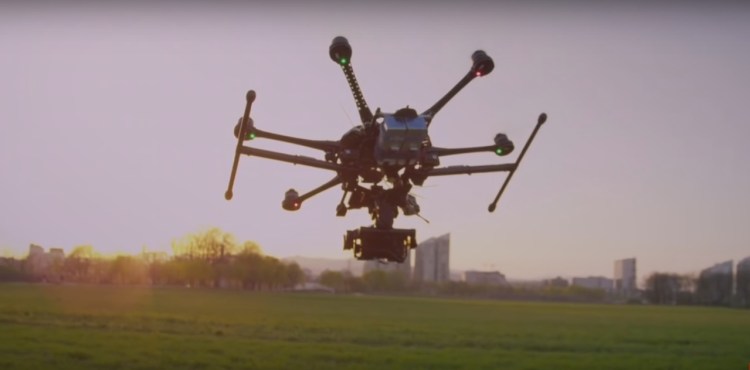Tech giant Facebook recently announced plans to bring Internet access to areas where many people have never touched a computer before — using solar-powered unmanned aerial vehicles as Wi-Fi hot spots.
The potential of these uniquely mobile hot spots is huge: Drones might be about to open the global economy to billions of individuals living in vast, unconnected parts of the planet.
With more than 1,000 business leaders betting heavily on drones — before the Federal Aviation Administration even debuts official regulations — industries across the board are taking a closer look at drone technology. UAVs are particularly poised to innovate in three industries.
Renewable Energy
If drones go mainstream, they could lead to a boom in renewable energy due to drastically decreased infrastructure costs, improved worker safety, and decreased outages.
Millions of photovoltaic modules comprise solar power plants, each of which will fail at some point. Skycatch, a Google-backed startup, has created an automated drone that flies over solar arrays at 50 mph to scan for failed modules. Each drone stores 15 gigabytes of data, which it beams to Box after returning to home base and replacing its own battery.
This sector’s investment in UAVs could pave the way for safe, effective monitoring of wind turbines, power plants, and power lines.
Mining
Commercial mining is an industry plagued by steep costs, but drones could significantly reduce overhead for mining companies.
The machinery is massive, sites are expansive, and worker safety requires constant monitoring. Companies often explore sites and supervise operations by helicopter — and whether you’re renting or buying, helicopters don’t come cheap.
So the initial popularity of drones within the industry isn’t surprising. When it comes to exploration, stockpile monitoring, and equipment tracking, drones can do everything helicopters can — but with a $200-per-hour price tag rather than the helicopter’s $2,000 hourly fee.
The industry is also eyeing drone technology to improve complex operations from mine mapping to search and rescue.
Transportation
Deficiencies in the nation’s transportation network will cost almost $1 trillion per year and 3.5 million jobs if they’re not repaired by 2020.
Thankfully, UAVs can help by mapping fine-scale damage that natural disasters do to bridges, roads, and highways to prevent costly, dangerous infrastructure collapses.
We’ve also seen an uptick in train derailments in recent years. These tragedies have cast a harsh light on the state of our rails. To prevent tragedies, companies such as BNSF Railway and Union Pacific have secured FAA authorization to employ drones for regular inspections of tracks, bridges, radio towers, and power lines.
When the public realizes drones are saving lives, expect a major surge in support. Investors would be wise to get in on the ground floor.
Making UAVs a Commercial Reality
While drones are increasingly catching the attention of tech leaders, the changing regulatory environment is hampering widespread use. Business leaders, including Amazon CEO Jeff Bezos (who plans to unleash a fleet of package-delivering drones), have expressed frustration with the FAA for stymying innovation.
With startup leaders, in particular, seeking approval for innovative uses, the FAA is fast-tracking UAV integration. Currently, businesses wishing to use drones may apply to the FAA for a Section 333 exemption. The FAA grants exemptions that prove an equivalent (or greater) level of safety than that of a manned aircraft. Section 333 exemptions, however, are a temporary measure to allow some safe uses of drones.
A more streamlined approval process will spur industry investment, and the FAA likely will debut more permanent, specific regulations by 2017. Expect the new rules to address industrial use must-haves, including long linear operations (such as power line inspection) and beyond-line-of-sight operations (such as those contemplated by Amazon).
To that end, the FAA is partnering with NASA and industry leaders to develop the Unmanned Aerial System Traffic Management infrastructure — also known as sky highways for drones. This pivotal development likely will lead to an explosion in commercial drone operations.
Drones can and will transform the business landscape. Understanding drone technology, regulations, and industry trends could give you your next strategic advantage.
William O’Connor is a partner in the San Diego office of Morrison & Foerster, a global law firm with 17 offices throughout the world. O’Connor has represented airlines, aerospace manufacturers, and airports in high-profile cases involving major commercial airline disasters, military and civilian helicopter accidents, and business jet crashes. He is also a licensed private pilot.


